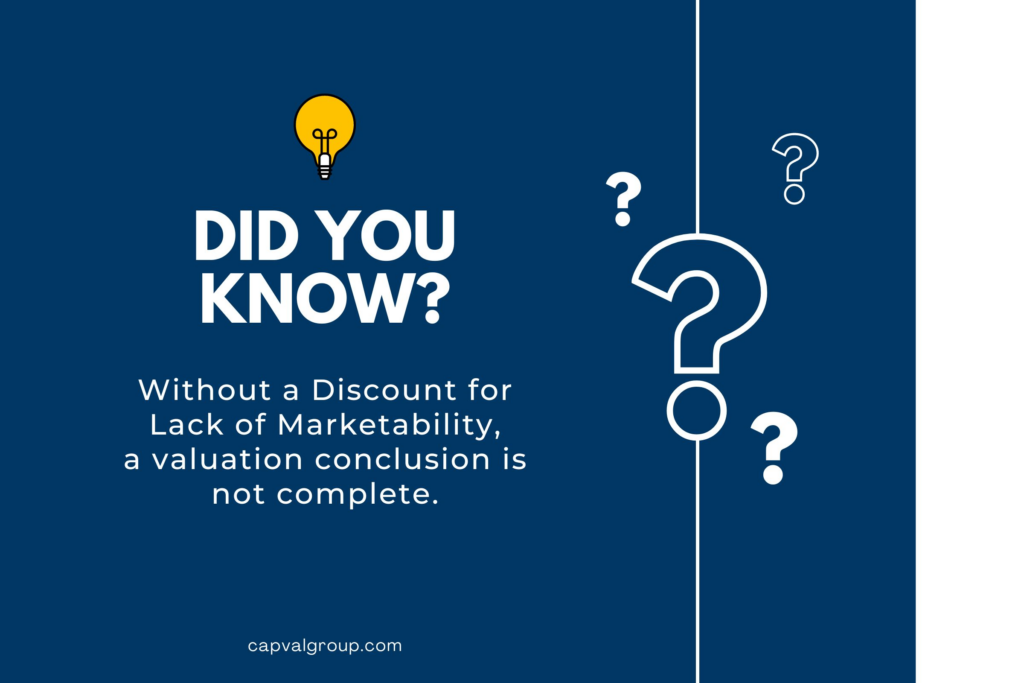Experienced business appraisers consider various factors when valuing a privately owned business, one of which is known as the discount for lack of marketability (DLOM). This discount for lack of marketability represents a deduction from the value of an ownership interest to reflect the limited marketability, or ease of sale, of a privately owned business.

The value of a privately owned business is based on first projecting the expected future cash flows and then discounting these cash flows to the present value using a discount rate that reflects the risk of investing in the subject business. While we’ve detailed how these discount rates are determined in an earlier blog (5 Ingredients Used for Pricing a Business), it’s important to note that this calculation of the discount rate is based on data from publicly traded companies. Once you apply this publicly traded-based discount rate to the subject company’s cash flows to determine the present value of the business, the resulting value represents what is termed as a publicly traded ‘level’ of value.
However, investments in publicly traded companies can be sold/converted to cash within three business days. Whereas, an investment in a privately owned business takes much longer to liquidate—often 9 to 12 months. Therefore, this level of value (as though publicly traded) requires an additional discount to account for the fact that the privately owned investment cannot be liquidated in three days.
Determining the size of the DLOM requires consideration of several factors:
- 1. Ability to determine when to sell: Owners with a controlling equity interest (51% or more) can unilaterally decide to sell. If they own 50% or less of the business (referred to as owning a minority interest), they must first get others to agree it is time to sell. If unable to get such agreement, the ownership interest may be unsalable. Therefore, if a controlling ownership interest is being valued, the discount will be smaller than if it is a minority ownership interest.
- 2. Inability to convert the investment to cash in 3 business days. A savvy buyer knows that once the transaction has occurred, the investment owned is in a private company, not a publicly traded company. When it is their turn to sell, they will experience the impact of not being able to sell their ownership interest in 3 days. Therefore, a discount is required to adjust from the ‘as publicly traded’ level of value to the privately held (closely held) level of value.
- 3. Existing legal agreements between owners. Agreements between owners can affect the transferability of ownership interests, particularly in businesses with multiple owners. These agreements need to be considered as to the stated enhancements or restrictions upon transfer, in order to calculate the size of the discount for lack of marketability.
Ignoring the DLOM when valuing a business using an earnings multiple can lead to significant discrepancies in the perceived value between buyers and sellers, hindering or ending negotiations. Both buyer and seller need to be cognizant of why and how this discount applies.
Conclusion
When determining the fair market value of a privately owned business, it is critical to ensure that the valuation considers the difference in the characteristics of owning a publicly traded investment as compared to a privately owned investment. Applying an appropriate DLOM based on the characteristics of the business and the subject equity interest ensures that both buyers and sellers have a realistic understanding of the business’s worth.
If you would like to discuss a specific business situation please reach out to us through our Contact page or call us at 608-257-2757 and one of us would be happy to talk with you.

